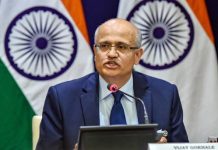New Delhi: In its pre-Budget recommendations, ASSOCHAM has said the government should increase the exemption limit for income tax to at least Rs 5 lakh so that more disposable income is left in the hands of consumers and the economy gets a consumption boost and further leg-up in the recovery. Without accounting for rebates, the present exemption limit is Rs 2.5 lakh for the assesses.
In a media interaction, ASSOCHAM President Sumant Sinha said buoyancy in both the direct and indirect taxes should give enough elbow room to the government for raising the income tax exemption limit.
The government must respond to the proactive steps other nations are doing to support the production of green hydrogen as India strives to become a major energy producer. Attention should be given to sustainable and green industries to promote job growth and a green economy. Economy security bigger than manufacturing security, he said. Advancing the green economy, achieving energy independence, making investments in green industries, and reducing the use of fossil fuels are all steps for Atmanirbharta.
”Boosting consumption by leaving more money in the hands of the consumers, is a low hanging fruit for a further recovery in economic growth, ” said Deepak Sood, Secretary General ASSOCHAM.
The chamber said along with the consumption, the other path to a sustainable growth would be further promoting investment. In this direction, the ASSOCHAM said that 15% corporate tax rate for new investments in manufacturing can be extended to all sectors, including services.
Suggesting another relief measure, it said the interest for late payment of the GST should be reduced to 12 per cent from 18 per cent . ”The penal interest rate of 18 per cent is too high , particularly for the MSMEs ”
Measures like Production-Linked Incentive (PLI) scheme, with an outlay of around Rs 2-lakh crore for 13 sectors, were introduced in 2021. PLI has done much to boost domestic manufacturing, investment as well as job creation. It is therefore advised that the government should continue to focus on it. Reports suggest proposals are in works to extend the Rs 35,000 crore PLI scheme to various sectors.
While exporters are asking for credit at affordable rates, MSMEs are asking for restructuring of existing loans, giving them room for a fixed term of one year of moratorium and two years additional timeline to repay term loans. They have also asked for extension of the NPA (non-performing assets) classification period to 180 days from 90 days as they struggle to get timely payments from their buyers, leading to defaults in payments.
There is also a need to identify new sectors in MSMEs, like the travel and tourism industry. By prioritizing tourism infrastructure development, it will lead to employment creation as well as growth of MSMEs. In addition, opportunity, innovation, new tech goods, and leveraging tech solutions to the global market should be used for increasing economic activity and employment.
It is necessary for MSME to be more connected to the world. What is needed is a transparent, paperless, end-to-end system to facilitate on-time payment, which will not only inject liquidity into the market but also encourage businesses to reinvest. This is part of a collective effort to popularise and increase acceptance for the “Make in India”
In an environment of global challenges like recession looming large over several major economies of the world, high inflation, supply disruptions caused by a protracted Ukraine-Russia war and uncertain and volatile energy prices, India remains resilient helped by pragmatic government policies, food security, financial stability and the never-say-die spirit of our people.
The IMF has projected that more than one-third of the global economy will contract in 2022 or next year. Economies such as the US have seen inflation unprecedented for several decades. The US inflation is well above seven per cent, forcing the Federal Reserve to revise interest rates several times , keeping upward of 4 per cent. This had implications for the emerging economies including India which have been witnessing flow of global funds to the US dollar as an asset class. The recent pressure on the Indian rupee was a result of these developments , but the RBI rose to the occasion managing the situation pretty well.
The INR is quite stable now; in fact the fund flow is reversing inward again, taking all the components together. So, our macro economy remains not only stable but also growing upward of six per cent. According to the latest RBI estimates, the Indian economy is projected to grow by 6.8 per cent for the FY’23. We largely agree with the RBI assessment, with an upward bias.
As for inflation, while the signs of peaking have started appearing for the major economies as well, these are still tentative. However, as the drop in CPI to 11 month low of 5.88 per cent for November shows, inflation in India is more likely to have peaked, though remains above the RBI comfort level of 4 per cent. But it has come down below the RBI upper end of 6 per cent.
The 6.3 per cent GDP growth for the second quarter of the current financial year had a large contribution from the catch-up recovery in services like trade, hotels and transport in the post-Covid period. However, there was a contraction in manufacturing by 4.3 per cent. The contraction in manufacturing continues even in the latest numbers of industrial production for October.
Manufacturing contracted by 5.6 per cent in October 2022 over the corresponding month of the previous year. While the government has extended several schemes like PLIs, extension of lower corporate tax 15 per cent up to March 31,2024 , global disruption in supply chain, rising prices of raw material would have made an impact on the manufacturing. While the raw material prices have started easing, new challenges like rising interest rates have to be tackled. However, we must add that the nagging twin balance sheet problem has largely been addressed. A lot of deleveraging has taken place thanks to a robust capital market which was effectively utilised by the corporates for fresh equity infusion and retiring expensive debts.
The manufacturing which is one of the largest job creators is expecting a boost from the Budget. This is also important for India to take full advantage of the China Plus policies of the global corporations in the unfolding world economic order. Labour reforms which were initiated by the Centre by codification of different labour laws have not been implemented by most of the states.
Public finances despite all the odds have remained robust, giving elbow room to the government to maintain the tempo of capital expenditure. The Central government had committed effective capital expenditure of Rs 10.68 lakh crore for 2022-23 , about 4.1 per cent of the GDP. We would expect this expenditure to increase by at least 10 per cent in the next fiscal. The tax revenue has remained buoyant that would not only allow the government to spend aggressively but also keep the fiscal discipline in place so that no negative impact goes to the financial markets and inflation.
While the Indian macro situation looks far more positive than most of the major economies, we need to remain focused on growth. The next year’s budget would be a catalyst for enabling India to be the fastest growing economy of the world. Our focus should be both boosting consumption and investment.













